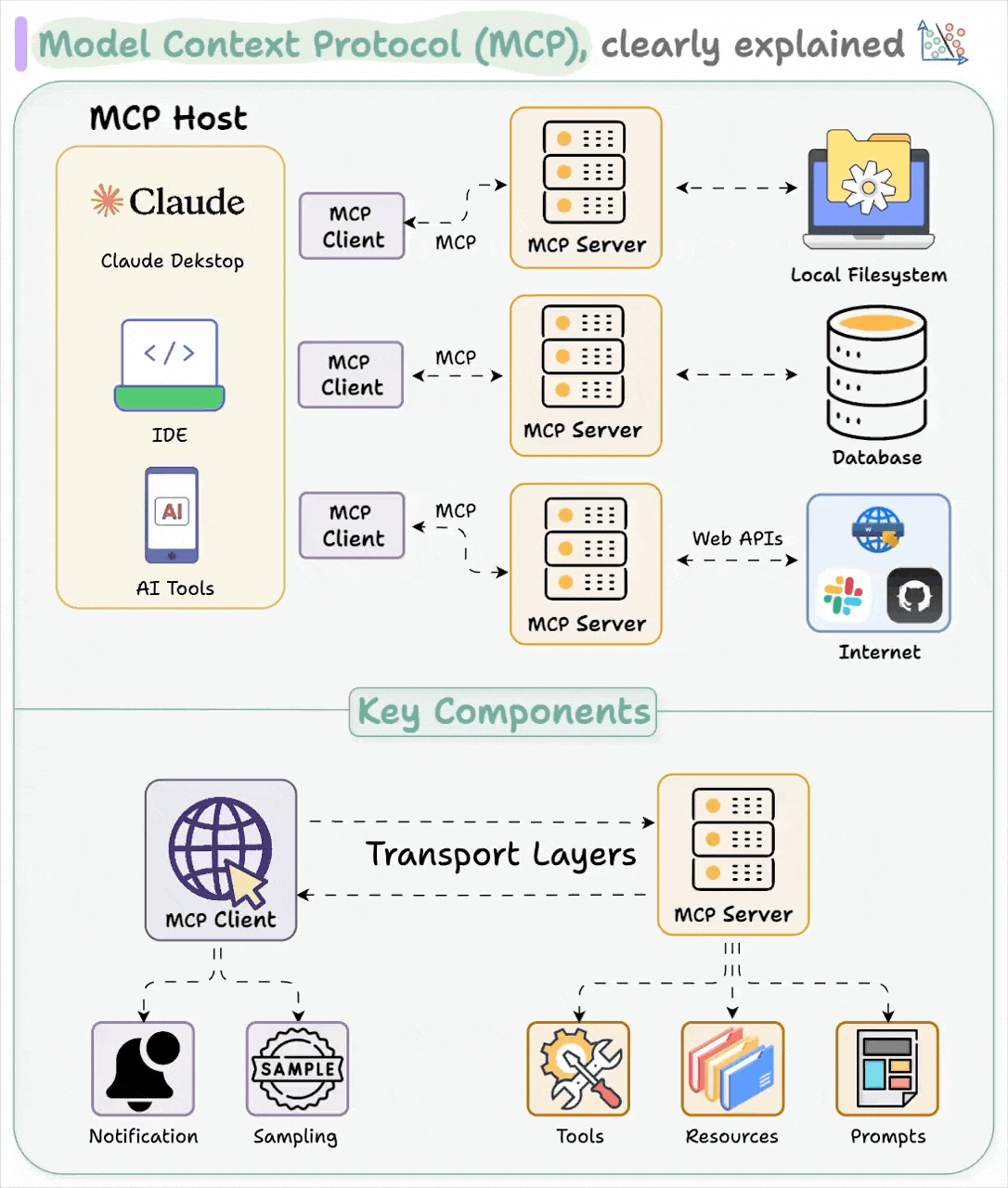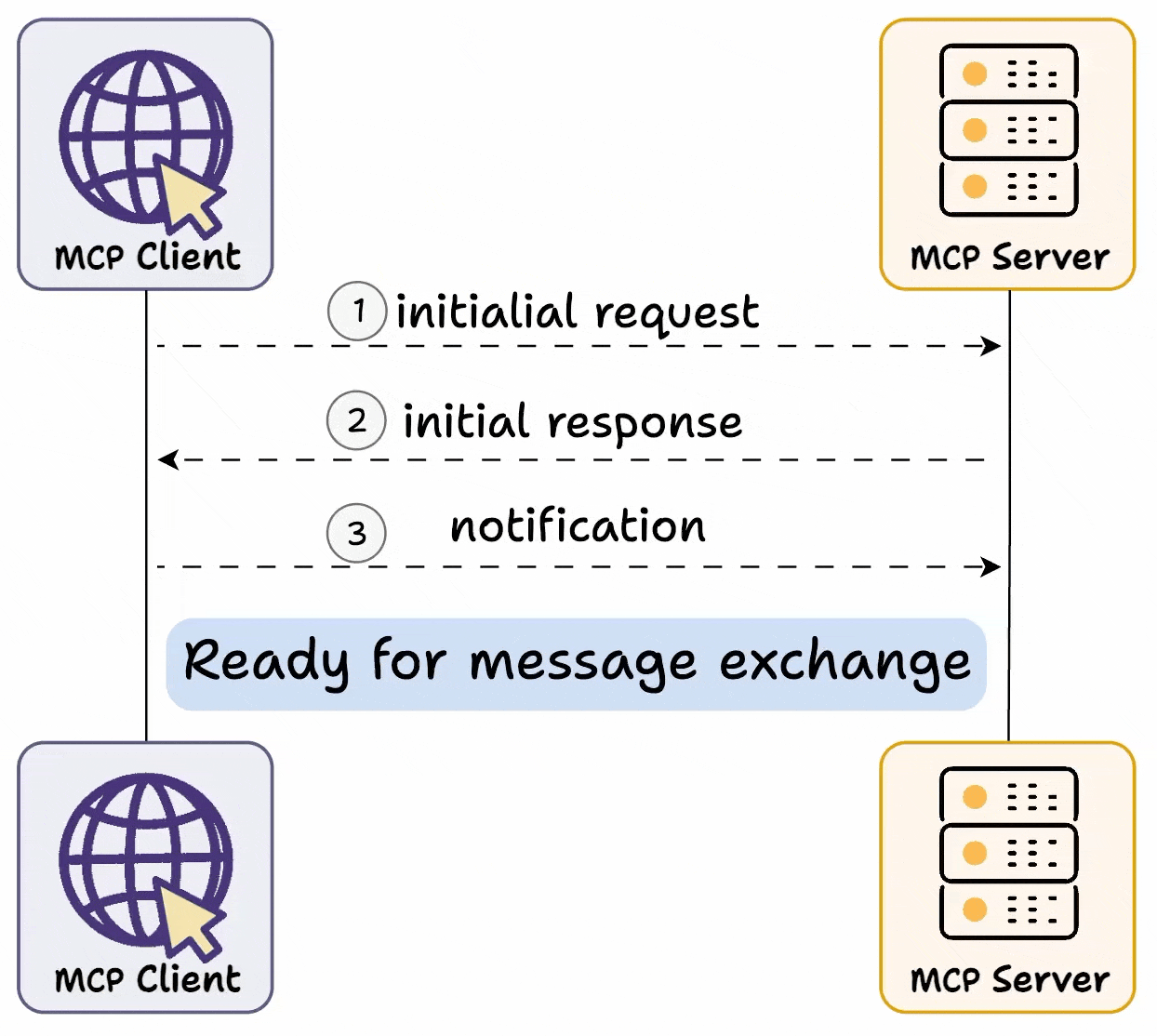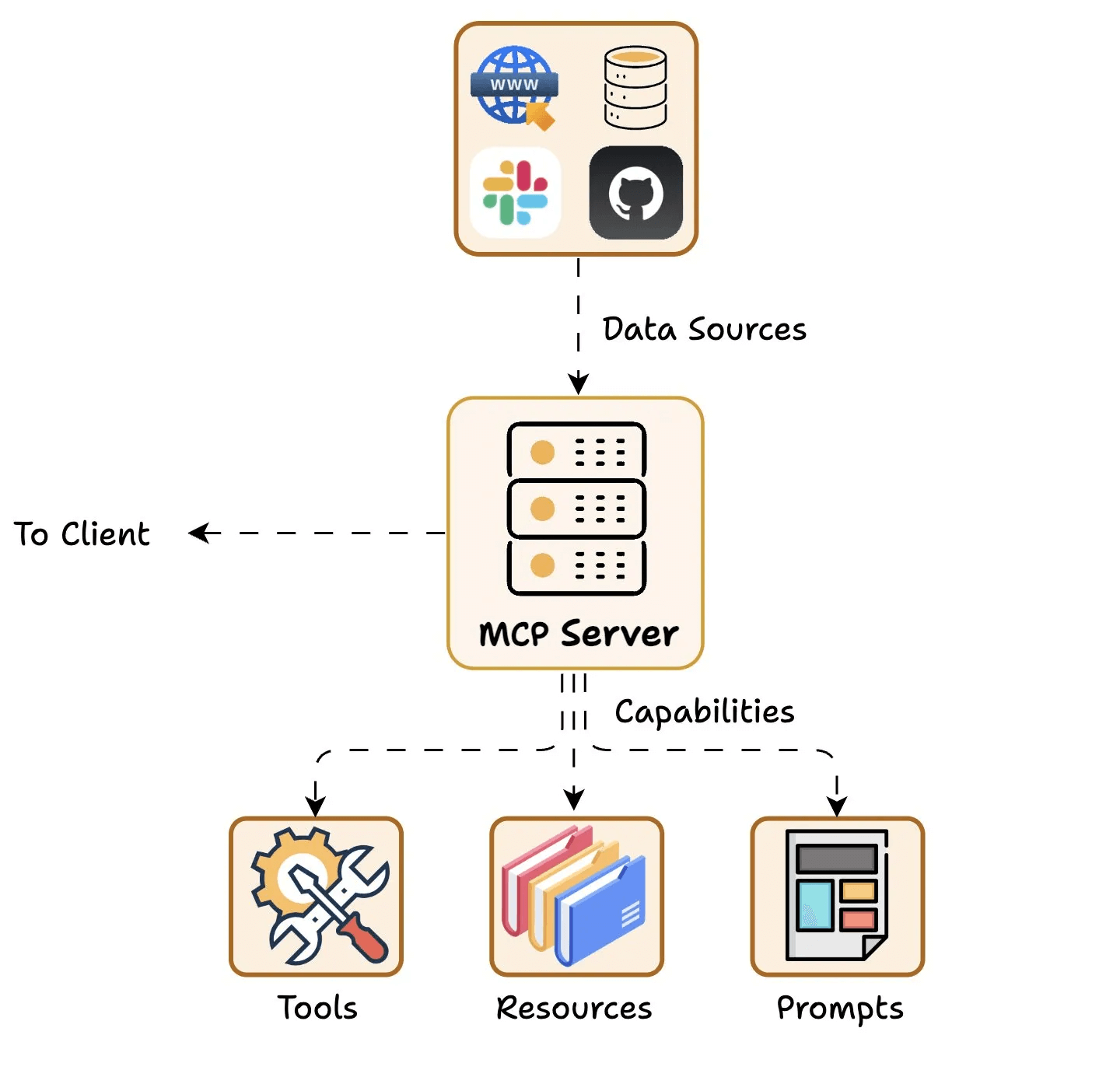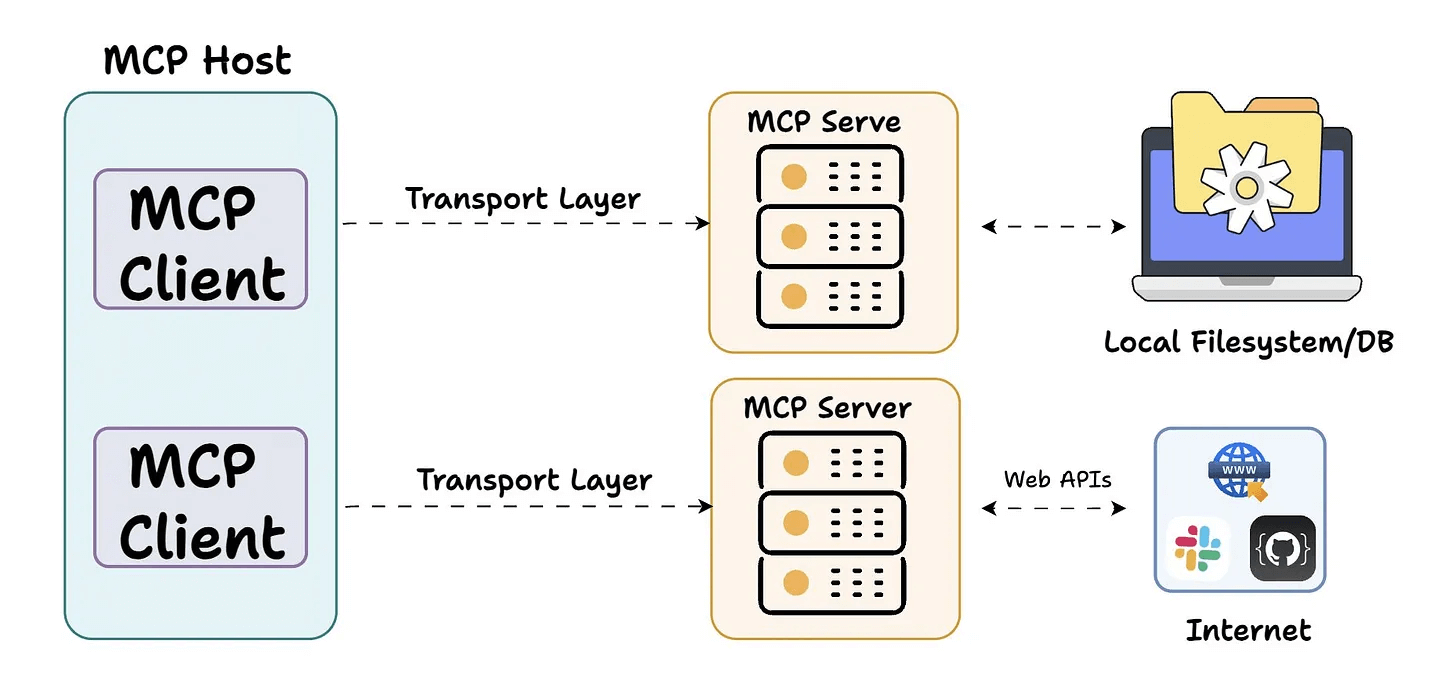
Windsurf added MCP support in Wave 3 because developers were tired of switching between 12 different tools to get shit done. MCP (Model Context Protocol) lets AI tools talk to other services without writing custom integrations for every single thing you need.
The Problem MCP Actually Solves
Before MCP, if you wanted Cascade to read your database schema, you'd need:
- A custom plugin specifically for your database type
- Another plugin for GitHub integration
- Yet another plugin for Linear/Jira
- Each one with its own auth setup, error handling, and maintenance burden
Most AI editors were useless for workflow automation. They could generate code, but had no clue about your actual infrastructure.
How MCP Actually Works

MCP has three parts:
- Host: Windsurf IDE running on your machine
- Client: Built into Cascade, handles communication
- Servers: Individual processes that connect to specific services
When you ask Cascade to "fix the slow query in the users table," here's what happens:
- Cascade checks which MCP servers are available
- Connects to your PostgreSQL MCP server
- Queries actual table structure and indexes
- Suggests specific optimizations based on real data
The key difference: Cascade knows your actual database schema, not some generic placeholder.
Setting Up MCP Servers (The Real Process)
The official Windsurf MCP docs and configuration tutorial show how to configure servers, but here's what actually happens:
Step 1: Edit your mcp_config.json
Located at ~/.codeium/windsurf/mcp_config.json. Basic GitHub setup:
{
\"mcpServers\": {
\"github\": {
\"command\": \"npx\",
\"args\": [\"-y\", \"@modelcontextprotocol/server-github\"],
\"env\": {
\"GITHUB_PERSONAL_ACCESS_TOKEN\": \"ghp_your_token_here\"
}
}
}
}
Step 2: Get API Keys/Tokens
- GitHub: Need a personal access token - detailed setup guide
- PostgreSQL: Connection string with proper permissions - connection string examples
- Linear: API key from Linear settings
- Most fail here because token permissions are wrong - see common issues
Step 3: Test the Connection
Hit refresh in Windsurf MCP settings. If it doesn't work:
- Check your token permissions (most common issue)
- Verify the MCP server actually installed (
npxcan be flaky) - Look at Windsurf logs for actual error messages
Step 4: Enable Specific Tools
Windsurf limits you to 100 total tools across all servers. You'll need to disable tools you don't use or you'll hit the limit with 3-4 servers.
MCP Servers That Actually Work
Here's what actually works after testing everything from the official MCP servers repository:
Solid Options:
- GitHub MCP Server: Works great, took 5 minutes to set up with proper token permissions
- Filesystem MCP: Basic file operations, reliable
- PostgreSQL MCP: Schema queries work, connection can be picky - see setup guide
- Brave Search MCP: Web search integration, needs API key - check community servers list
Flaky as Hell:
- MongoDB MCP: Connection drops randomly, error messages useless - community implementations available
- Docker MCP: Permissions nightmare, documentation assumes you know Docker internals - community implementations available
- Slack MCP: Rate limiting will bite you, webhook setup is painful - check troubleshooting guide
Don't Bother:
- Custom database servers: Great when they work, nightmare to debug when they don't
- Most community servers: Abandoned or broken, no support
Real-World Usage Examples
Database Query Optimization:
Connected to production PostgreSQL. Asked Cascade "why is the user_activity query slow?" It:
- Read the actual table schema via MCP
- Analyzed the query execution plan
- Suggested adding an index on (user_id, created_at)
- Generated the exact SQL command
Worked perfectly. Saved me 30 minutes of manual investigation.
GitHub Issue Debugging:
When production broke, asked Cascade to "find recent commits that might have caused the auth errors." It:
- Searched recent commits via GitHub MCP
- Identified changes to auth middleware
- Found the specific line that broke session handling
- Created a fix branch with the revert
This is the shit that makes MCP worth the setup hassle.
Common Setup Failures
Authentication Hell:
- GitHub tokens need `repo`, `issues`, `pull_requests` scopes minimum - common permission errors here
- PostgreSQL connections fail with SSL issues (add
sslmode=require) - debugging connection strings - API rate limits hit faster than expected - see rate limit handling
Memory Issues:
- Each MCP server eats RAM like crazy - I've seen anywhere from 40MB to 150MB depending on what they're doing
- Windsurf gets sluggish with 5+ servers running
- Docker-based servers are worse - some eat 200MB+ for no good reason
Network Problems:
- Corporate firewalls block MCP server connections - check proxy configs
- VPN issues cause random timeouts - connection troubleshooting
- Some servers don't handle connection drops gracefully - silent failure issues
Performance Reality Check
Memory Usage (on my M2 MacBook Pro, your mileage will vary):
- Base Windsurf: around 800MB RAM
- GitHub MCP server: usually 60-90MB but I've seen it spike to 120MB
- PostgreSQL MCP: starts at 50MB, grows to 100MB+ over time
- Filesystem MCP: lightweight at ~45MB
Speed:
- Simple file operations: usually under 500ms if you're lucky
- Database schema reads: anywhere from 1-5 seconds depending on connection
- GitHub API calls: 2-5 seconds for small repos, can be 10+ for big ones
- Complex multi-server workflows: 10-30 seconds on a good day, couple minutes when things go sideways
The 3AM Test:
When debugging production issues at 3am, MCP servers either work immediately or you give up and do it manually. There's no middle ground.
Enterprise Gotchas

Security Considerations:
- MCP servers run with your local permissions
- Credentials stored in plaintext config files
- No audit trail for MCP server actions
- Network traffic not encrypted by default
Compliance Issues:
- MCP servers can access sensitive data
- No built-in data retention controls
- Audit logs depend on individual server implementation
- Some servers log API keys in debug output
The Bottom Line
MCP integration in Windsurf works once you get it set up. The setup is a pain in the ass, half the servers are broken, and the error messages are useless. But when it works:
Without MCP: "Generate a SQL query for user analytics"
Gets generic placeholder with wrong table names
With MCP: "Generate a SQL query for user analytics"
Gets actual query with your table schema, proper indexes, and working syntax
Worth the weekend of frustration if you're doing real development work. Skip it if you just want to generate hello world apps.
Takes a weekend to get 3-4 solid MCP servers working. After that, your IDE actually knows your infrastructure instead of making shit up.


